Choices, choices everywhere. There’s no escaping making decisions in life; from those inconsequential little choices around what to have for dinner, to those bigger, life altering, business impacting choices that can change the course and direction of your life or organisation for the better or the worse.
In business, decisions can often feel like a gamble and the weight of responsibility in making the ‘call’ can feel heavy and not clear cut, which can result in both indecisiveness and decision paralysis.
One decision we come across frequently is the decision on whether to custom build or buy your business software. We often find that business owners and IT Managers have really well defined ideas and thoughts around how they want to use digital to transform their operations and customer experiences, but are struggling with the choices on how best to implement and execute them.
We at GCD have over 20 years of experience in building bespoke digital solutions for businesses, but we are proud to say that we always strive to help our clients make the ‘right’ decision for them when it comes to the build vs buy conundrum.
Below are the key pillars that we employ to help make the choice clearer:-
Build vs buy: it all depends on your why!
What is your why and what?
Before you spend any time researching and reviewing potential software solutions, stop and ask yourself the following questions:
- Why do you need software?
- What are you trying to achieve with it?
- What is the job to be done?
If you are trying to solve a common industry problem, there is probably a solution that already exists. Many business paths are well worn tracks and have their needs very effectively and efficiently met with commercial off-the-shelf solutions. In these scenarios, don’t just speak with the software providers, reach out to others in the industry or indeed other industries who use these products and get real and honest feedback before deciding on a solution and beginning your project.
If what you are trying to achieve is centred around gaining a competitive advantage, delivering a unique experience through a product / service or bringing something completely new to market, then a custom built solution may be the best way forward.
Always consider cost in the context of value
It’s obvious, but it’s worth noting that the cost of any solution should play a major part in your decision. However the cost should ALWAYS be considered in the context of the value it will produce. You’re aiming to gain the most value for the best cost and it must make commercial sense for your business.
Buying an existing software solution has many advantages when it comes to pricing, with flexible subscription models based on the number of users, features and other factors. However, it’s important that you forecast your needs correctly to understand the true subscription cost. Consider if you will need to expand your use of the system and what impact this will have on costs. Try to unearth any ‘hidden’ costs such as implementation fees (including any time required from your own team), whether you need an external vendor to advise on set up and training and whether there are any additional future support or upgrade costs. The devil is in the detail.
There is no denying that when it comes to building a custom solution, the upfront cost will likely be higher. You’re buying something that is custom made for you and your business and you most likely will need to employ an external project team to design and deliver it. The costs are however in your control. You can decide how much to invest and manage the size and specification of the project. Consider the total cost of each option by calculating the costs over a minimum 5 year period for a better like for like comparison.
Weigh up the risks
There are a few risk factors worth exploring when making the “Build or Buy” decision. The first is loss of knowledge. Building a custom solution with a third party provider does come with a risk that a small team or individual who has all the essential knowledge of your product and the intricacies of how it works for you, may leave and take that knowledge with them, causing disruption.
Whereas, buying a solution reduces this risk as there is no single point of failure. Their products are generic, have a core infrastructure and are simply replicated across all customers. That is unless they decide to discontinue the product, which is another risk you should evaluate.
However, if you do decide to buy, choosing a custom software provider who employs thorough documentation and training best practice to their staff will minimise the risk of loss of knowledge. Even better, because you own the solution, you own the IP and have access to the source code should any problems arise.
The primary risk with buying a solution is that you don’t fully control it. You don’t have access to the source code. If you discover a bug, you can’t just ask the team to fix it. Instead, you will submit it to the vendor and if they agree it’ll be scheduled according to their priorities, not yours.
Is there another approach?
Consider if there is another option to the build vs buy? Does it need to be one or other? Could you do a blend of both to get the best outcome?
Building doesn’t have to mean a complete restart. A blended approach could use some packaged components from a vendor (or several) and custom code to integrate them altogether. This could reduce your risk and cost, while still enjoying the benefits of a custom solution tailored to your business.
So which is best I hear you ask?
The answer is ‘it depends’. It depends on what you are trying to achieve, what value you are trying to create, what budget you have available and your risk tolerance for each approach.
Each business is different and it is important that due consideration is given to each approach. At the end of the day, the aim is to successfully achieve your business goals. The software should be a ‘means to an end’ and the focus should always be on delivering on these goals, in the most cost effective and valuable way possible.
In business, decisions can often feel like a gamble and the weight of responsibility in making the ‘call’ can feel heavy and not clear cut, which can result in both indecisiveness and decision paralysis.
One decision we come across frequently is the decision on whether to custom build or buy your business software. We often find that business owners and IT Managers have really well defined ideas and thoughts around how they want to use digital to transform their operations and customer experiences, but are struggling with the choices on how best to implement and execute them.
We at GCD have over 20 years of experience in building bespoke digital solutions for businesses, but we are proud to say that we always strive to help our clients make the ‘right’ decision for them when it comes to the build vs buy conundrum.
Below are the key pillars that we employ to help make the choice clearer:-
Build vs buy: it all depends on your why!
What is your why and what?
Before you spend any time researching and reviewing potential software solutions, stop and ask yourself the following questions:
- Why do you need software?
- What are you trying to achieve with it?
- What is the job to be done?
If you are trying to solve a common industry problem, there is probably a solution that already exists. Many business paths are well worn tracks and have their needs very effectively and efficiently met with commercial off-the-shelf solutions. In these scenarios, don’t just speak with the software providers, reach out to others in the industry or indeed other industries who use these products and get real and honest feedback before deciding on a solution and beginning your project.
If what you are trying to achieve is centred around gaining a competitive advantage, delivering a unique experience through a product / service or bringing something completely new to market, then a custom built solution may be the best way forward.
Always consider cost in the context of value
It’s obvious, but it’s worth noting that the cost of any solution should play a major part in your decision. However the cost should ALWAYS be considered in the context of the value it will produce. You’re aiming to gain the most value for the best cost and it must make commercial sense for your business.
Buying an existing software solution has many advantages when it comes to pricing, with flexible subscription models based on the number of users, features and other factors. However, it’s important that you forecast your needs correctly to understand the true subscription cost. Consider if you will need to expand your use of the system and what impact this will have on costs. Try to unearth any ‘hidden’ costs such as implementation fees (including any time required from your own team), whether you need an external vendor to advise on set up and training and whether there are any additional future support or upgrade costs. The devil is in the detail.
There is no denying that when it comes to building a custom solution, the upfront cost will likely be higher. You’re buying something that is custom made for you and your business and you most likely will need to employ an external project team to design and deliver it. The costs are however in your control. You can decide how much to invest and manage the size and specification of the project. Consider the total cost of each option by calculating the costs over a minimum 5 year period for a better like for like comparison.
Weigh up the risks
There are a few risk factors worth exploring when making the “Build or Buy” decision. The first is loss of knowledge. Building a custom solution with a third party provider does come with a risk that a small team or individual who has all the essential knowledge of your product and the intricacies of how it works for you, may leave and take that knowledge with them, causing disruption.
Whereas, buying a solution reduces this risk as there is no single point of failure. Their products are generic, have a core infrastructure and are simply replicated across all customers. That is unless they decide to discontinue the product, which is another risk you should evaluate.
However, if you do decide to buy, choosing a custom software provider who employs thorough documentation and training best practice to their staff will minimise the risk of loss of knowledge. Even better, because you own the solution, you own the IP and have access to the source code should any problems arise.
The primary risk with buying a solution is that you don’t fully control it. You don’t have access to the source code. If you discover a bug, you can’t just ask the team to fix it. Instead, you will submit it to the vendor and if they agree it’ll be scheduled according to their priorities, not yours.
Is there another approach?
Consider if there is another option to the build vs buy? Does it need to be one or other? Could you do a blend of both to get the best outcome?
Building doesn’t have to mean a complete restart. A blended approach could use some packaged components from a vendor (or several) and custom code to integrate them altogether. This could reduce your risk and cost, while still enjoying the benefits of a custom solution tailored to your business.
So which is best I hear you ask?
The answer is ‘it depends’. It depends on what you are trying to achieve, what value you are trying to create, what budget you have available and your risk tolerance for each approach.
Each business is different and it is important that due consideration is given to each approach. At the end of the day, the aim is to successfully achieve your business goals. The software should be a ‘means to an end’ and the focus should always be on delivering on these goals, in the most cost effective and valuable way possible.
Credit: GCD Technologies


